Best Fitbit 2024
The Fitbit Charge 6 and Sense 2 both make a case for best Fitbit, but the Pixel Watch 2 has them both beat (for Android users).

1. Best overall
2. Best display
3. Best smartwatch
4. Best midrange
5. Best on a budget
6. Best for kids
Choosing the best Fitbit isn't an easy decision. A Fitbit Sense 2 has all the health tools you could want, but it's expensive. The Charge 6 strikes a great balance between smarts and affordability, but you may resent the small display. The Pixel Watch 2 is a fantastic device with Fitbit tricks built-in, but its short battery life and Android exclusivity may be deal breakers.
You may be on the hunt for a new Fitbit after the recent Charge 5 update fiasco, or deciding whether to buy a new Fitbit now or wait for a hypothetical Sense 3 or Versa 5 later this year. Whatever the case, we've reviewed every one of the Fitbits on the market today, and we're here to help you choose which to buy or whether to wait.
We're highlighting the six best Fitbits below, noting which of them have the latest Google tricks, the best health sensors, and the most useful features.
At a glance

Best overall
Although not technically a Fitbit, the Google Pixel Watch 2 has deep Fitbit integration, the same health sensors as the Sense 2, and tons of tools that no Fitbit can offer.

Best Fitbit tracker
You want a real Fitbit with proper battery life, not some bulky smartwatch. The new Charge 6 does have Google app support, as well as tons of health sensors and 6-day battery life.

Best Fitbit watch
You want a petite, comfortable watch with 6-day battery life and all the health sensors you could want. It's not as smart as the Pixel Watch 2, but it does have Google Maps and Wallet support.
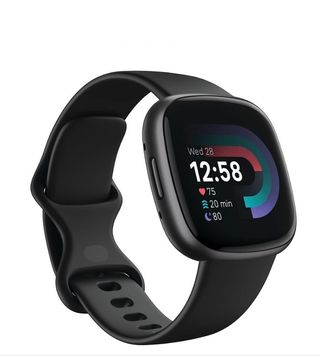
Best midrange
Versatile and stylish, the Fitbit Versa 4 features a vibrant AMOLED display, solid battery life, Google Maps, and Google Wallet, but lacks the Sense 2's sensors or Versa 3's smarts.
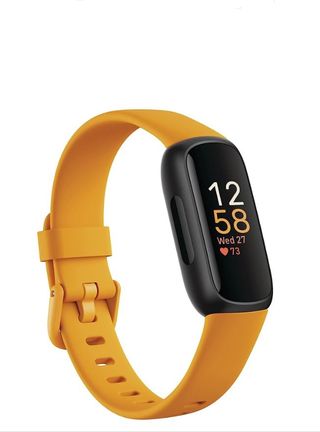
Best on a budget
Typically retailing for under $100, the Fitbit Inspire 3 comes with excellent battery life, a compact, lightweight construction, and all-day activity tracking.

Best for kids
If you want a Fitbit for your youngster, the Ace 3 is the perfect choice, complete with a durable, kid-friendly design, up to eight days of battery life, and activity/sleep tracking capabilities.
Best overall

Specifications
Reasons to buy
Reasons to avoid
We recognize that calling the Pixel Watch 2 the best Fitbit may be polarizing, since it technically isn't a Fitbit. But unlike the first Pixel Watch, which had Fitbit Premium but took months to add health and safety features to match, the Pixel Watch 2 is a true Fitbit watch straight out of the gate, with perks that a normal Fitbit will never get.
What makes the Pixel Watch 2 special? It has a redesigned optical heart rate sensor with multiple LEDs and photodiodes that's meant to capture data even during fast-paced exercises where the watch may not stay properly flush. Google itself says that it's more accurate than other Fitbit HRMs in those scenarios; otherwise, you get tracking for irregular heart rhythm, high and low HR warnings, and automatic workout detection based on your heartbeat and wrist motion.
On top of that, it has the Sense 2's cEDA sensor to continuously track your stress levels during the day. At night, it'll measure blood oxygen and skin temperature to help determine the quality of your sleep, which then factors into your Daily Readiness score.
The Sense 2 has the same sensors at a lower price, along with a mic and speaker. But Google neutered the Sense 2's smarts, removing Google Assistant and playback controls, disabling the Wi-Fi antenna, and removing any third-party apps compared to the original Sense. The Pixel Watch 2, powered by Wear OS 4, gives you all of the above, along with actual music storage for apps like Spotify and plenty of third-party apps if you want to step away from Fitbit for Strava, Komoot, or another brand. Our Pixel Watch 2 review runs through some of the other smartwatch perks.
The Pixel Watch 2 comes with six free months of Fitbit Premium, giving you access to a Daily Readiness Score and recommendations, a Wellness Report, guided workouts, Sleep Score, and other perks. After that, you'll have to decide whether Fitbit Premium is worth the subscription; unlike the other Fitbits on this list, you'll still have plenty of non-Fitbit fitness apps to choose if you decide to let Premium lapse.
With the Pixel Watch 2, Google essentially made a proper "Fitbit smartwatch" in a way that the Sense 2 and Versa 4 could never hope to match. It has its drawbacks: the need for daily charging, the high price, and the Android phone requirement that shuts out iPhone owners. If that doesn't scare you off, then start your search here.

Best Fitbit tracker
2. Fitbit Charge 6
Our expert review:
Specifications
Reasons to buy
Reasons to avoid
Let's put aside the Pixel Watch 2 and focus on true Fitbit-branded products that work on both iOS and Android. Now, the question really becomes this: should you buy a fitness tracker or smartwatch? The Sense 2 and Versa 4 give you a mic and speaker, plus a more conveniently large AMOLED display to swipe through data and apps. Despite that, we'll still point you towards the Charge 6 first.
The Charge 6 has all-day heart rate and sleep tracking, built-in GPS tracking instead of connected GPS, NFC for tap-to-pay transactions, and automatic workout detection. All of this, along with the petite 1-inch AMOLED touch display, is virtually unchanged from the Charge 5; even the bands are interchangeable.
So what's new? The biggest change is the focus on Google: the Charge 6 has a basic Maps function to point you towards your destination, Google Wallet instead of Fitbit Pay, and YouTube Music playback controls (though no other streaming service is supported, frustratingly). Google also borrowed some AI tricks from the Pixel Watch series to make the heart rate monitor "60% more accurate readings during vigorous activities like HIIT, spinning, and rowing."
Beyond that, the Charge 6 now has a capacitive button that lets you activate the display, go back to the main watch face, or swap between data during a workout. Compared to the finicky capacitive buttons on the Versa 3 and Sense, the Charge 6's button is much more reliable. In our Fitbit Charge 6 review, we noted that the button "works as it should, without being prone to accidental presses like a physical button," and that it's much more convenient than having to always double-tap the Charge 5 display to activate it.
Overall, we called the Fitbit Charge 6 the best fitness tracker across brands for a reason. It's comfortable to wear and has tricks that no other petite band offers. For sleep tracking, it's not as comfortable as the Inspire 3, but it's a close second and gives you a much more useable display. Generally speaking, this is the true Fitbit we'd recommend first.
Best Fitbit watch
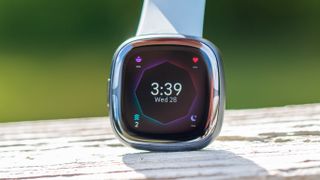
Specifications
Reasons to buy
Reasons to avoid
The Fitbit Sense 2 lives up to its name. It packs all of the health sensors you could want to get a whole-body sense of your personal fitness level. Specifically, it uses skin temperature and blood oxygen sensors to judge the quality of your sleep, a cEDA sensor to continuously track your stress levels, and an ECG and heart rate monitor to actively and passively check for atrial fibrillation.
It displays all of this information in an easily accessible manner, either on the watch directly or from the Fitbit app on your phone. Fitbit and Google worked together to improve the user interface, bringing some of the UI design elements from Wear OS 3 to the Fitbit OS. Fitbit even released an update that brings Google Wallet support and Google Maps support to its latest wearables.
Compared to the original Sense, you've lost music playback controls, limited third-party apps, Wi-Fi downloads, and Google Assistant support; you'll have to settle for Bluetooth and Alexa commands. But it's not all bad. The Sense 2 is both lighter and slimmer than the original Sense, while still being rated for up to six days of battery life. And it finally ditched the finicky capacitive button you had to squeeze and hope that it worked, in exchange for a compact physical button that always works.
Compared to the Charge 6, it costs twice as much and has comparable battery life, but you'll appreciate the larger display and built-in mic and speaker for Bluetooth calls. Match it up against the Pixel Watch 2, and it's trickier; that costs only $50 more and has a lot of upsides in terms of intelligent features like Google Assistant and third-party apps. Of course, if you own an iPhone or want more than a day of battery life, the Sense 2 is the no-brainer choice.
Best midrange
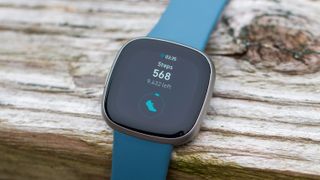
Specifications
Reasons to buy
Reasons to avoid
There was a lot to love when it came to the Fitbit Versa 3, as it gave you about 90% of the same experience as the Fitbit Sense, without the higher price tag. That trend continued with the Fitbit Versa 4, as it and the much pricier Sense 2 have a lot in common.
Along with being able to use the best Fitbit bands, the Versa 4 also has a physical button on the side, as Fitbit got rid of the frustrating capacitive one. And as for health tracking, there are only three key differentiators between the Sense 2 and the Versa 4. You won't find a built-in skin temperature sensor, you can't use Fitbit's ECG app to check your heart rhythm, and you aren't able to use the EDA Scan app for stress management.
The interface of the Versa 4 was also overhauled, giving it a look that falls more in line with Wear OS 3 compared to the old Fitbit UI. Google Maps and Wallet are also planned for a future update, but you won't find Assistant anywhere, instead being left to rely on Amazon Alexa if you want to have a digital assistant.
An argument could definitely be made for picking the Versa 4 over the Sense 2, especially with it being about $70 less expensive. But, we still feel as though the Sense 2 is the more well-rounded option if you want the best Fitbit watch.
Like the Sense 2, the Versa 4 had plenty of the last generation's smarts removed. Without Google Assistant, built-in music, Wi-Fi, third-party apps, or the Sense 2's extra health sensors, the Versa 4 is a beautiful, semi-affordable shell for Fitbit Premium and heart rate tracking...and not much else.
Best on a budget

Specifications
Reasons to buy
Reasons to avoid
If you like the idea of the Charge 6, but it's still too rich for your blood, take a look at the Fitbit Inspire 3. Not only is this the most affordable Fitbit you can buy, but it's also the lightest. It's so light that you might forget you're wearing the thing!
That small size means you miss out on the built-in GPS and more readable notifications from the Charge 6, but it'll work just fine if you run with your phone and can rely on Connected GPS. This is easily the best Fitbit for budget shoppers who want a wide array of features at an affordable price.
Outside of the missing GPS, the Inspire 3 comes with almost everything else you could ask for. It tracks your all-day activity and sleep and automatically detects exercises. 24/7 heart-rate monitoring is included, too, as is a full-year membership to Fitbit Premium at no added cost! Combine all of that with up to 10 days of battery on a single charge, and you end up with a really capable tracker.
As wonderful as the Inspire 3 is, it is more utilitarian than fashion-focused. If you're interested in a similarly-sized tracker that looks a bit more luxurious, you might want to check out the Fitbit Luxe. That tracker has a stainless steel finish, a color AMOLED screen, and a host of stylish bands and accessories.
Best for kids
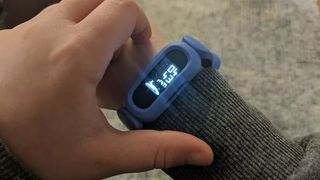
Specifications
Reasons to buy
Reasons to avoid
Living a healthy lifestyle is just as crucial for your kids as it is for yourself. So for the youngsters in your family, Fitbit has a tracker specifically for them in the form of the Fitbit Ace 3.
Essentially a repackaged version of the Inspire line, the Fitbit Ace 3 has activity and sleep tracking, pushes kids to get at least 60 minutes of active time each day (per CDC recommendations), is swim-proof, and lasts for up to eight days on a single charge (longer than every other Fitbit except the Inspire 3).
Fitbit's added a few nifty tweaks on the software side of things to ensure kids have the best and safest experience possible. For example, kids get a unique Kid View on the Fitbit app that only shows select data, including their stats, any badges they've earned, and clock faces they can choose for the Ace 3. In addition, parents/guardians have a Parent View on their own app, allowing them to see their kids' activity and approve various connections/permissions.
Available in two fun color combos, the Ace 3 is the go-to Fitbit if you want something tailored specifically for a younger user. Fitbit has released a couple of fun Minions-themed bands as additional accessories.
Keep in mind that while the Ace 3 tracks steps, it has a disabled heart rate monitor and no location tracking, meaning you can't actually track calories or effort level. You may also want to look at the other best kids smartwatches for other functionality like on-wrist phone calls or geofencing.
How to choose the best Fitbit for you
Why you can trust Android Central

As you can see, Fitbit makes a lot of great fitness trackers/smartwatches, but each has its strengths and weaknesses.
The Pixel Watch 2 and Fitbit Sense 2 are both on our list of the best Android smartwatches, but have very different focuses despite their shared health sensor suite — and only the Sense 2 will work for folks that don't want to tie themselves to Android specifically. The Pixel Watch 2 is an exciting device that doesn't limit you to just fitness software; the Sense 2 keeps things focused on Fitbit software alone, for better or worse.
The Fitbit Charge 6 also makes a case to be the best Fitbit in 2024, simply because it costs half as much as either device, while offering much of the same fitness software and health sensors. If you're going to pay regularly for Fitbit Premium, it makes sense to start with a more affordable option so you have money left over for it down the line. That said, the Sense 2's twice-as-bright display and the Pixel Watch 2's apps make them appealing enough to spend extra.
Be an expert in 5 minutes
Get the latest news from Android Central, your trusted companion in the world of Android

Andrew Myrick is a Senior Editor at Android Central. He enjoys everything to do with technology, including tablets, smartphones, and everything in between. Perhaps his favorite past-time is collecting different headphones, even if they all end up in the same drawer.
- Patrick FarmereCommerce Editor
- Michael L HicksSenior Editor, VR/AR and fitness
